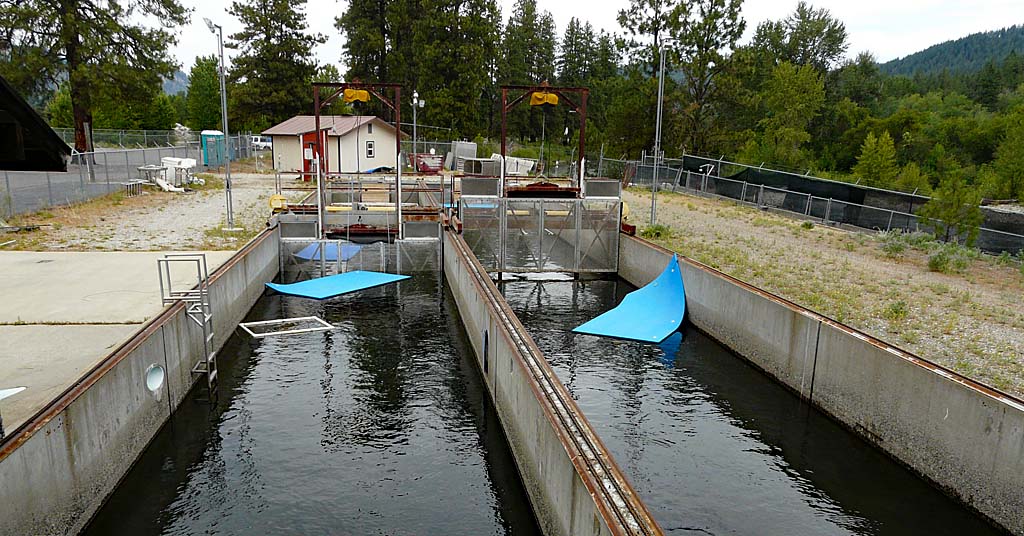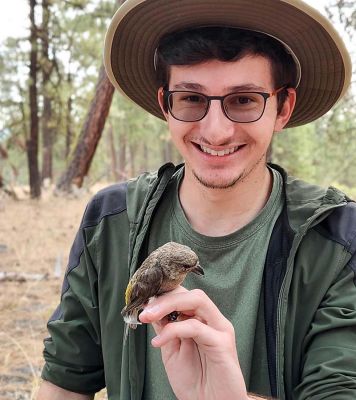Walla Walla sees opportunities for retail, housing in evaluating new taxing district
Published 5:00 am Thursday, July 27, 2023

- The Walla Walla City Council is considering a plan that would connect Myra Road to Taumarson Road by crossing State Route 125 and an alfalfa field north of Highland Road, seen here on Wednesday, July 26.
Myra Road winds between the Walla Walla Town Center shopping area, hotels and local businesses, the Fort Walla Walla Museum and park and more on its path between U.S. 12 and State Route 125.
The road’s destination before the fields, vacant lots and sparse residential development beyond has never been considered final — a southern expansion of Myra Road has been proposed in planning documents since the early 2000s.
Trending
City officials say a new, temporary taxing district proposed in the area offers a way forward for funding and future development through what is called tax increment financing.
Forming the district would allow the city to use a portion of property taxes already collected in the area to fund the southern extension of Myra Road and encourage builders to make plans for housing, shopping and more in the zone, City Manager Elizabeth Chamberlain said at a City Council work session Monday, July 24.
“That’s one of the reasons why we looked at this proposed boundary is the extension of Myra Road … as well as the infrastructure that would go under the road network would be the catalyst to see this area developed,” she said.
Tiberius Solutions consultant Nick Popenuk, who was hired by the city to help create such a district, said the funding plan and project timeline give stability to those who may have an interest in building in the area.
“They can feel a lot more comfortable that the infrastructure improvements here are real, and that they are going to happen in a near-term timeframe,” he said.
How it works
Trending
Under tax increment financing, some property taxes paid in the designated area are collected by the taxing district to pay for public projects, Popenuk explained at the meeting.
The projects — road improvements, utility upgrades and more — are intended to spur future development, which, in turn, grows the tax base, he said.
The program allows the government entity, in this case the city, to collect a portion of the property taxes paid in the district to fund the projects.
Taxes collected on the current taxable assessed value would continue to be split among existing districts, but taxes collected from any increase to the current value would be paid to the new taxing district.
“It’s really the difference between what is being generated just on the value of the property today, versus what the property (value) is in the future with that tax increment investment,” he said.
School districts are not affected by this pull of funds, but other taxing districts — city, county, ports and fire districts — are, Popenuk said, which is why community outreach is important in the planning process.
“We strongly encourage a collaborative environment with those impacted taxing districts,” he said. “We’re all in this together. It’s one community. Everyone’s trying to do what’s best for the folks that live and work here.”
Though not required by state statute, Popenuk recommends the city explain what is proposed and what the financial impacts would be to existing taxing districts early in the process.
Each municipality can have two established tax increment areas at a time, and each area can collect property tax revenues for up to 25 years.
What it might look like
Walla Walla is looking at forming a district south of SR 125 with the intention of connecting Myra Road to Taumarson Road, the next arterial street.
That connection to the next arterial street is required by the Washington state Department of Transportation because of the road’s proximity to a state highway. That’s part of what has made the project a challenge to fund and plan over the years, Chamberlain said.
She said the expansion project, which could include the addition of a roundabout at the SR 125 intersection as opposed to a signal, was estimated to cost between $12 million and $14 million. That includes bike lanes, sidewalks and one lane in both directions, she said.
The hope is that extending the road, and adding utilities in the area, will spur needed development.
Two needs identified in the city’s resident satisfaction survey were shopping opportunities and housing, and there’s potential for both there, she said.
People want options for shopping for large items, and a wider variety of big box stores, Chamberlain said.
“That’s something we would certainly be targeting, is increased shopping opportunities,” she said.
Affordable housing is also an area of concern for residents.
“Our neighborhood residential zone, of course, allows for a variety of housing types,” she said, “and so we would certainly want to see a diversity of housing types on the residentially zoned piece of property.”
She said she could see an opportunity for garden-style apartments near Highland Road, away from the state route.
She emphasized this is not a new tax or an increase for taxpayers, though it would affect area taxing districts including the city, county and port.
Council input
Council members had many questions for Popenuk at the meeting Monday, with some working to understand exactly how the taxing district would work. Several said they saw the potential such a district could offer.
“I can definitely see how this would generate interest in investing in an area to a developer,” Council Member Brian Casey said. “I think it would occur a lot faster this way, and it gives them kind of a safe setting to invest or move forward with their development.”
Council Member Ted Koehler said the option could be a good tool to get more shopping in the area and add a second access point at Taumarson Road, which would help residents and emergency responders.
Council Member Steve Moss said the funding would give the city bargaining power to get other funds for the roadwork and to work with potential partners.
The consultant is expected to bring back initial information about the proposed projects, costs and revenue in September or October. The council can reevaluate the plan at that time and decide whether to move forward with an official proposal, Popenuk said.









